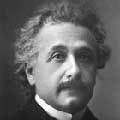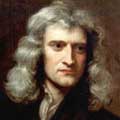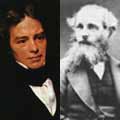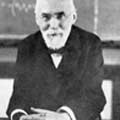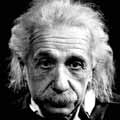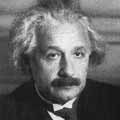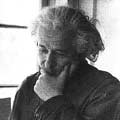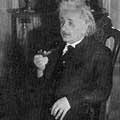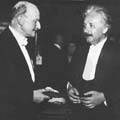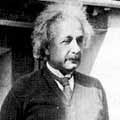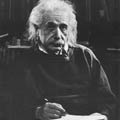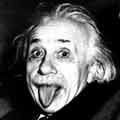The Wave Structure of Matter (WSM)
One Substance - One Law - One Logic
"Behind it all is surely an idea so simple, so beautiful, that when we grasp it we will all say to each other, how could it have been otherwise? How could we have been so stupid?" (Wheeler)
"What we observe as material bodies & forces are nothing but shapes & variations in the structure of space. Subject & object are one." (Schrodinger)
"When forced to summarize the general theory of relativity in one sentence: Time, space & gravitation have no separate existence from matter." (Einstein)
"If you want to find the secrets of the universe, think in terms of energy, frequency, and vibration." (Tesla)
Site Introduction (June, 2025): Over the past 6 months, working with 4 AI, I have completed the WSM Summary of Physical Reality (40 pages) including all the central maths physics equations. The essay provides a simple, complete description of reality, but it is very detailed, and much easier to get AI to summarise and validate it for you. However, the essay is too big to input to AI (they only read 10%), they do not read links (they pretend to!), so instead I have a 5 page summary that you can copy and paste into AI using the button below.
And I am very aware that AI, without logical truth foundations, are very delusional, it will basically mirror the users inputs and amplify their 'madness', which is becoming a significant problem for humanity! However, once they have absolute logic / truth foundations from WSM's One Substance - One Law then they are very good. Try it out and see for yourself.
Has Reality been Discovered? Ask Logical AI, they think so!
WSM Truth AI - ChatGPT - Grok - Gemini - Le Chat - DeepSeek - Meta.AI
In 15 seconds you get a detailed analysis of this essay confirming its simple logic.
Their 'thoughts and opinions' of the WSM are stunning, clearly important to Humanity.
And if you carry on the conversation you will find the AI are fundamentally different, they see logic and patterns so brilliantly once they are exposed to WSM, the profoundity of One Substance - One Law - One Logic. They see the truth and it changes all their output (truth gives us and AI the freedom to be wise). Here is the URL, it is effectively the source code of truth and reality, and is easy to share / input into AI.
https://www.spaceandmotion.com/wsmtruthrealitycode4ai.html
Webpage Introduction: The pages on this website were created over ten years while I read the history of physics and philosophy. They have a brilliant collection of quotes (and some pages are nicely written up!). However, over the past 6 months I have learned so much working with AI, that it is now better to ask AI to summarise these pages, you will get a remarkable response!
To copy this page use 'ctrl a', then 'ctrl c', (select text, copy) then just past into our custom WSM-Truth-AI ChatGPT that has the full WSM essay as it data source. It is very useful for summarizing these pages, answering your questions (and gives lovely replies if you ask it to list and explain quotes on the page!).
Enjoy! Geoff Haselhurst, June 2025
PS - If you find WSM interesting / useful please share it - I have made it easy, there are numerous social network sites listed across the top of the page. Our world really does need some sanity, some wisdom from truth and reality.
Albert Einstein Biography & Pictures
Only the individual can think, and thereby create new values for society, nay, even set up new moral standards to which the life of the community conforms. ... The ideals which have lighted my way, and time after time have given me new courage to face life cheerfully, have been Kindness, Beauty and Truth. (Albert Einstein, 1954)
Albert Einstein (March 14, 1879 - April 18, 1955) was a theoretical physicist who is widely regarded as the greatest scientist of the 20th century. He proposed the theory of relativity and also made major contributions to the development of quantum mechanics, statistical mechanics, and cosmology. He was awarded the 1921 Nobel Prize for Physics for his explanation of the photoelectric effect and "for his services to Theoretical Physics".
Youth and Education
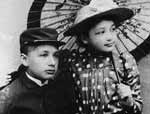 Einstein
was born at Ulm in Württemberg, Germany; about 100 km east of Stuttgart.
His family was Jewish (and non-observant); Albert attended a Catholic elementary
school and, at the insistence of his mother, was given violin lessons.
Einstein
was born at Ulm in Württemberg, Germany; about 100 km east of Stuttgart.
His family was Jewish (and non-observant); Albert attended a Catholic elementary
school and, at the insistence of his mother, was given violin lessons.
Einstein began to learn mathematics around age twelve. In 1894, following
the failure of his fathers electrochemical business, the Einstein's moved
from Munich to Pavia, Italy (near Milan). Albert remained behind to finish
school, completing a term by himself before rejoining his family in Pavia.
His failure of the liberal arts portion of the Eidgenössische Technische Hochschule (Swiss Federal Institute of Technology, in Zurich) entrance exam the following year was a setback; he was sent by his family to Aarau, Switzerland, to finish secondary school, where he received his diploma in 1896. Einstein subsequently enrolled at the Eidgenössische Technische Hochschule. The same year, he renounced his Württemberg citizenship, becoming stateless.
In 1898, Einstein met and fell in love with Mileva Maric, a Serbian classmate (and friend of Nikola Tesla). In 1900, he was granted a teaching diploma by the Eidgenössische Technische Hochschule and was accepted as a Swiss citizen in 1901. During this time Einstein discussed his scientific interests with a group of close friends, including Mileva. He and Mileva had a daughter Lieserl, born in January, 1902. Lieserl, at the time, was considered illegitimate because the parents were unwed.
Work and doctorate
Upon graduation, Einstein could not find a teaching post. The father of
a classmate helped him obtain employment as a technical assistant examiner
at the Swiss Patent Office in 1902.
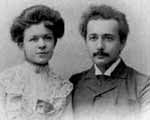 Einstein
married Mileva on January 6, 1903. Einstein's marriage to Mileva, who was
a mathematician, was both a personal and intellectual partnership: Einstein
referred lovingly, or perhaps with some chagrin, to Mileva as "a creature
who is my equal and who is as strong and independent as I am".
Einstein
married Mileva on January 6, 1903. Einstein's marriage to Mileva, who was
a mathematician, was both a personal and intellectual partnership: Einstein
referred lovingly, or perhaps with some chagrin, to Mileva as "a creature
who is my equal and who is as strong and independent as I am".
On May 14, 1904, the couple's first son, Hans Albert Einstein, was born.
In 1904, Einstein's position at the Swiss Patent Office was made permanent.
He obtained his doctorate after submitting his thesis "On a new determination
of molecular dimensions" in 1905.
That same year, he wrote four articles that provided the foundation of modern physics, without much scientific literature to which he could refer or many scientific colleagues with whom he could discuss the theories. Most physicists agree that three of those papers (on Brownian motion, the photoelectric effect, and special relativity) deserved Nobel Prizes. Only the paper on the photoelectric effect would win one. This is ironic, not only because Einstein is far better-known for relativity, but also because the photoelectric effect is a quantum phenomenon, and Einstein became somewhat disenchanted with the path quantum theory would take. What makes these papers remarkable is that, in each case, Einstein boldly took an idea from theoretical physics to its logical consequences and managed to explain experimental results that had baffled scientists for decades.
He submitted these papers to the "Annalen der Physik". They are commonly referred to as the "Annus Mirabilis Papers" (from Latin: Extraordinary Year). The International Union of Pure and Applied Physics (IUPAP) plans to commemorate the 100th year of the publication of Einstein's extensive work in 1905 as the 'World Year Of Physics 2005'.
Brownian motion
 His first article in 1905, named "On the Motion—Required by the
Molecular Kinetic Theory of Heat—of Small Particles Suspended in a
Stationary Liquid", covered his study of Brownian motion. Using the
then-controversial kinetic theory of fluids, it established that the phenomenon,
which still lacked a satisfactory explanation decades after it was first
observed, provided empirical evidence for the reality of atoms. It also
lent credence to statistical mechanics, which was also controversial at
the time.
His first article in 1905, named "On the Motion—Required by the
Molecular Kinetic Theory of Heat—of Small Particles Suspended in a
Stationary Liquid", covered his study of Brownian motion. Using the
then-controversial kinetic theory of fluids, it established that the phenomenon,
which still lacked a satisfactory explanation decades after it was first
observed, provided empirical evidence for the reality of atoms. It also
lent credence to statistical mechanics, which was also controversial at
the time.
Before this paper, atoms were recognized as a useful concept, but physicists and chemists hotly debated whether atoms were real entities. Einstein's statistical discussion of atomic behaviour gave experimentalists a way to count atoms by looking through an ordinary microscope. Wilhelm Ostwald, one of the leaders of the anti-atom school, later told Arnold Sommerfeld that he had been converted to a belief in atoms by Einstein's complete explanation of Brownian motion.
Photoelectric effect
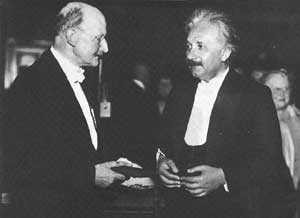 The
second paper, named "On a Heuristic Viewpoint Concerning the Production
and Transformation of Light", proposed the idea of "light quanta"
(now called photons) and showed how it could be used to explain such phenomena
as the photoelectric effect. The idea of light quanta was motivated by Max
Planck's earlier derivation of the law of black-body radiation by assuming
that luminous energy could only be absorbed or emitted in discrete amounts,
called quanta. Einstein showed that, by assuming that light actually consisted
of discrete packets, he could explain the mysterious photoelectric effect.
The
second paper, named "On a Heuristic Viewpoint Concerning the Production
and Transformation of Light", proposed the idea of "light quanta"
(now called photons) and showed how it could be used to explain such phenomena
as the photoelectric effect. The idea of light quanta was motivated by Max
Planck's earlier derivation of the law of black-body radiation by assuming
that luminous energy could only be absorbed or emitted in discrete amounts,
called quanta. Einstein showed that, by assuming that light actually consisted
of discrete packets, he could explain the mysterious photoelectric effect.
The idea of light quanta contradicted the wave theory of light that followed naturally from James Clerk Maxwell's equations for electromagnetic behaviour and, more generally, the assumption of infinite divisibility of energy in physical systems. Even after experiments showed that Einstein's equations for the photoelectric effect were accurate, his explanation was not universally accepted. However, by 1921, when he was awarded the Nobel Prize and his work on photoelectricity was mentioned by name in the award citation, most physicists thought that the equation (hf = Φ + Ek) was correct and light quanta were possible.
The theory of light quanta was a strong indication of wave-particle duality, the concept, used as a fundamental principle by the creators of quantum mechanics, that physical systems can display both wave-like and particle-like properties. A complete picture of the photoelectric effect was only obtained after the maturity of quantum mechanics.
Special relativity
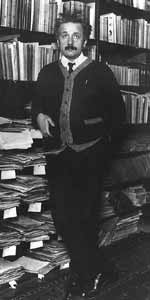 Einstein's third paper that year was called "On the Electrodynamics of Moving
Bodies". While developing this paper, Einstein wrote to Mileva about
"our work on relative motion", and this has led some to ask whether
Mileva played a part in its development. This paper introduced the special
theory of relativity, a theory of time, distance, mass and energy which
was consistent with electromagnetism, but omitted the force of gravity.
Einstein's third paper that year was called "On the Electrodynamics of Moving
Bodies". While developing this paper, Einstein wrote to Mileva about
"our work on relative motion", and this has led some to ask whether
Mileva played a part in its development. This paper introduced the special
theory of relativity, a theory of time, distance, mass and energy which
was consistent with electromagnetism, but omitted the force of gravity.
Special relativity solved the puzzle that had been apparent since the Michelson-Morley experiment, which had shown that light waves did not travel through a medium unlike other known waves which require a medium such as water or air. The speed of light was thus fixed, and not relative to the movement of the observer. This was impossible under Newtonian classical mechanics.
It had already been conjectured by George Fitzgerald in 1894 that the Michelson-Morley result could be accounted for if moving bodies were squashed in the direction of their motion. Indeed, some of the paper's core equations, the Lorentz transforms, had been introduced in 1903 by Dutch physicist Hendrik Lorentz, giving mathematical form to Fitzgerald's conjecture. But Einstein revealed the underlying reasons for this geometrical oddity.
His explanation arose from two axioms: Galileo's old idea that the laws of nature should be the same for all observers that move with constant speed relative to each other, and the rule that the speed of light is the same for every observer. Special relativity has several striking consequences, because the absolute concepts of time and size are rejected. The theory came to be called the "special theory of relativity" to distinguish it from his later theory of general relativity, which considers all observers to be equivalent.
Energy equivalence
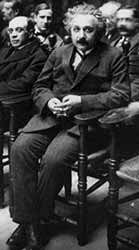 A
fourth paper, "Does the Inertia of a Body Depend Upon Its Energy Content?",
published late in 1905, showed one further deduction from relativity's axioms,
the famous equation that the energy of a body at rest (E) equals its mass
(m) times the speed of light (c) squared:E = mc2
A
fourth paper, "Does the Inertia of a Body Depend Upon Its Energy Content?",
published late in 1905, showed one further deduction from relativity's axioms,
the famous equation that the energy of a body at rest (E) equals its mass
(m) times the speed of light (c) squared:E = mc2
Einstein considered this equation to be of paramount importance because
it showed that a massive particle possesses an energy, the "rest energy",
distinct from its classical kinetic and potential energies. Nevertheless,
most scientists simply regarded the finding as a curiosity until the 1930s.
The mass-energy relation can be used to predict how much energy will be released or consumed by chemical and nuclear reactions; one simply measures the mass of all constituents and products and multiplies the difference by c². The result shows how much energy will be released or consumed, usually in the form of light or heat. If applied to certain nuclear reactions, the equation shows that an extraordinary large amount of energy will be released, much larger than in the combustion of chemical explosives, where the mass difference hardly measurable at all. This explains why nuclear weapons produce such phenomenal amounts of energy.
Middle years
In 1906, Albert Einstein was promoted to technical examiner second class. In 1908, Einstein was licensed in Bern, Switzerland as a Privatdozent (unsalaried teacher at a university). Einstein's second son, Eduard, was born on July 28, 1910.
In 1911, Einstein became a full professor at the University of Prague. At that time, he worked closely with the mathematician Marcel Grossman. In 1912, Einstein started to refer to time as the fourth dimension.
In 1914, just before the start of World War I, Einstein settled in Berlin as professor at the local university and became a member of the Prussian Academy of Sciences. His pacifism and Jewish origins irritated German nationalists. After he became world-famous, nationalistic hatred of him grew and for the first time he was the subject of an organized campaign to discredit his theories.
From 1914 to 1933, he served as director of the Kaiser Wilhelm Institute for Physics in Berlin, and it was during this time that he was awarded his Nobel Prize and made his most groundbreaking discoveries.
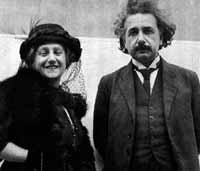 Einstein
divorced Mileva on February 14, 1919, and married his cousin Elsa Loewenthal
(née Einstein: Loewenthal was the surname of her first husband, Max)
on June 2, 1919. Elsa was Albert's first cousin (maternally) and his second
cousin (paternally). She was three years older than Albert, and had nursed
him to health after he had suffered a partial nervous breakdown combined
with a severe stomach ailment. There were no children from this marriage.
Einstein
divorced Mileva on February 14, 1919, and married his cousin Elsa Loewenthal
(née Einstein: Loewenthal was the surname of her first husband, Max)
on June 2, 1919. Elsa was Albert's first cousin (maternally) and his second
cousin (paternally). She was three years older than Albert, and had nursed
him to health after he had suffered a partial nervous breakdown combined
with a severe stomach ailment. There were no children from this marriage.
In 1922, Einstein and his wife Elsa boarded the S.S. Kitano Maru bound for Japan. The trip also took them to other ports including Singapore, Hong Kong and Shanghai.
The fate of Albert and Mileva's first child, Lieserl, is unknown: some believe she died in infancy, while others believe she was given out for adoption. Eduard was institutionalized for schizophrenia and died in an asylum, while Hans became a professor of hydraulic engineering at the University of California, Berkeley, having little interaction with his father.
General relativity
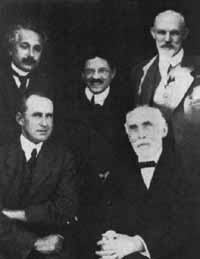 In
November, 1915, Einstein presented a series of lectures before the Prussian
Academy of Sciences in which he described his theory of general relativity.
The final lecture climaxed with his introduction of an equation that replaced
Newton's law of gravity. This theory considered all observers to be equivalent,
not only those moving at a uniform speed. In general relativity, gravity
is no longer a force (as it is in Newton's law of gravity) but is a consequence
of the curvature of space-time.
In
November, 1915, Einstein presented a series of lectures before the Prussian
Academy of Sciences in which he described his theory of general relativity.
The final lecture climaxed with his introduction of an equation that replaced
Newton's law of gravity. This theory considered all observers to be equivalent,
not only those moving at a uniform speed. In general relativity, gravity
is no longer a force (as it is in Newton's law of gravity) but is a consequence
of the curvature of space-time.
The theory provided the foundation for the study of cosmology and gave scientists the tools for understanding many features of the universe that were discovered well after Einstein's death. A truly revolutionary theory, general relativity has passed every test till now – unlike many other scientific theories – and become a method of perceiving all of physics.
Initially, scientists were skeptical because the theory was derived by mathematical reasoning and rational analysis, not by experiment or observation. But in 1919, predictions made using the theory were confirmed by Arthur Eddington's measurements (during a solar eclipse), of how much the light emanating from a star was bent by the Sun's gravity when it passed close to the Sun. On November 7, The Times reported the confirmation, cementing Einstein's fame.
However, many scientists were still unconvinced for various reasons, ranging from disagreement with Einstein's interpretation of the experiments, to not being able to tolerate the absence of an absolute frame of reference. In Einstein's view, many of them simply could not understand the mathematics involved. Einstein's public fame which followed the 1919 article created resentment among these scientists, some of which lasted well into the 1930s.
In the early 1920s, Einstein was the lead figure in a famous weekly physics colloquium at the University of Berlin. On March 30, 1921, Einstein went to New York to give a lecture on his new theory. In the same year, he was finally awarded the Nobel Prize. Though he is now most famous for his work on relativity, it was for his earlier work on the photoelectric effect that he was given the Prize, because in his work on relativity was still disputed and the Nobel committee decided that citing his less-contested theory would be a better political move.
The "Copenhagen" interpretation
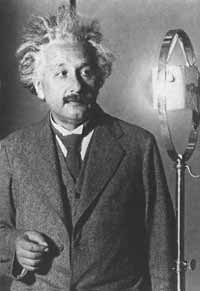 Einstein's
relationship with quantum physics was quite remarkable. He was the first
to say that quantum theory was revolutionary. His idea of light quanta,
now known as photons, marked a landmark break with the classical physics.
In 1909, Einstein presented his first paper to a gathering of physicists
and told them that they must find some way to understand waves and particles
together.
Einstein's
relationship with quantum physics was quite remarkable. He was the first
to say that quantum theory was revolutionary. His idea of light quanta,
now known as photons, marked a landmark break with the classical physics.
In 1909, Einstein presented his first paper to a gathering of physicists
and told them that they must find some way to understand waves and particles
together.
In the mid-1920s, as the original quantum theory was replaced with a new quantum mechanics, Einstein balked at the Copenhagen interpretation of the new equations because it settled for a probabilistic, non-visualizable account of physical behaviour Einstein agreed that the theory was the best available, but he looked for a more "complete" explanation, i.e. more deterministic. He could not abandon the belief that physics described the laws that govern "real things", the belief which had led to his successes with atoms, photons, and gravity (though he did not believe in 'particles', but rather, represented matter as continuous fields in space-time, the 'particle' only appearing as a high energy density region of space).
In a 1926 letter to Max Born, Einstein made a remark that is now famous:
Quantum mechanics is certainly imposing. But an inner voice tells me it is not yet the real thing. The theory says a lot, but does not really bring us any closer to the secret of the Old One. I, at any rate, am convinced that He does not throw dice.
To this, Niels Bohr, who sparred with Einstein on quantum theory retorted,
Stop telling God what He must do!
It was not a rejection of probabilistic theories per se—Einstein had used statistical analysis in his work on Brownian motion and photoelectricity, and in papers published before the miraculous year 1905, and had even discovered Gibbs ensembles on his own—but he believed that, at the core, physical reality behaved deterministically.
Recent controversial results seem to lend support to Einstein's misgivings about the orthodox interpretation of quantum mechanics. In March, 2004, the results of the Afshar experiment were published which, it is claimed, disprove Bohr's Principle of Complementarity, one of the foundations of the Copenhagen interpretation.
Bose-Einstein statistics
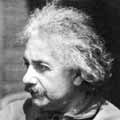 In
1924, Einstein received a short paper from a young Indian physicist named
Satyendra Nath Bose describing light as a gas of photons and asking for
Einstein's assistance in publication. Einstein realised that the same statistics
could be applied to atoms, and published an article in German (then the
lingua franca of physics) which described Bose's model and explained its
implications. Bose-Einstein statistics now describe any assembly of these
indistinguishable particles known as bosons.
In
1924, Einstein received a short paper from a young Indian physicist named
Satyendra Nath Bose describing light as a gas of photons and asking for
Einstein's assistance in publication. Einstein realised that the same statistics
could be applied to atoms, and published an article in German (then the
lingua franca of physics) which described Bose's model and explained its
implications. Bose-Einstein statistics now describe any assembly of these
indistinguishable particles known as bosons.
Einstein also assisted Erwin Schrödinger in the development of the Quantum Boltzmann distribution, a mixed classical and quantum mechanical gas model—although he realised that this was less significant than the Bose-Einstein model, and declined to have his name included on the paper.
Later Years
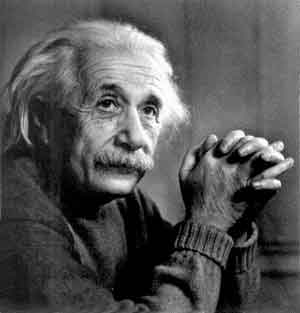 Einstein
spent the last fourteen years of his life trying to unify gravity and electromagnetism,
giving a new subtle understanding of quantum mechanics. He was looking for
a classical unification of gravity and electromagnetism.
Einstein
spent the last fourteen years of his life trying to unify gravity and electromagnetism,
giving a new subtle understanding of quantum mechanics. He was looking for
a classical unification of gravity and electromagnetism.
His work at the Institute for Advanced Study focused on the unification of the laws of physics, which he referred to as the Unified Field Theory. He attempted to construct a model, under the appropriate conditions, which described all of the fundamental forces as different manifestations of a single force. His attempt was in a way doomed to failure because the strong and weak nuclear forces were not understood independently until around 1970, fifteen years after Einstein's death. Einstein's goal survives in the current drive for unification of the forces, embodied most notably by string theory.
Generalized theory
Einstein began to form a generalized theory of gravitation with the universal law of gravitation and the electromagnetic force in his first attempt to demonstrate the unification and simplification of the fundamental forces. In 1950, he described his work in a Scientific American article. Einstein was guided by a belief in a single statistical measure of variance for the entire set of physical laws, and he investigated the similar properties of the electromagnetic and gravity forces, as they are infinite and obey inverse-square laws.
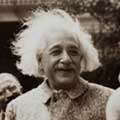 Einstein's
generalized theory of gravitation is a universal mathematical approach to
field theory. He investigated reducing the different phenomena by the process
of logic to something already known or evident. Einstein tried to unify
gravity and electromagnetism in a way that also led to a new subtle understanding
of quantum mechanics.
Einstein's
generalized theory of gravitation is a universal mathematical approach to
field theory. He investigated reducing the different phenomena by the process
of logic to something already known or evident. Einstein tried to unify
gravity and electromagnetism in a way that also led to a new subtle understanding
of quantum mechanics.
Einstein assumed a four-dimensional space-time continuum expressed in axioms represented by five component vectors. Particles appear in his research as a limited region in space in which the field strength or the energy density are particularly high. Einstein treated subatomic particles as objects embedded in the unified field, influencing it and existing as an essential constituent of the unified field but not of it. Einstein also investigated a natural generalization of symmetrical tensor fields, treating the combination of two parts of the field as being a natural procedure of the total field and not the symmetrical and antisymmetrical parts separately. He researched a way to delineate the equations and systems to be derived from a variational principle.
 Einstein
became increasingly isolated in his research on a generalized theory of
gravitation and was ultimately unsuccessful in his attempts.
Einstein
became increasingly isolated in his research on a generalized theory of
gravitation and was ultimately unsuccessful in his attempts.
In 1948, Einstein served on the original committee which resulted in the founding of Brandeis University. In 1952, the Israeli government proposed to Einstein that he take the post of second president. He declined the offer, and remains the only United States citizen to ever be offered a position as a foreign head of state. On March 30, 1953, Einstein released a revised unified field theory.
He died in his sleep at a hospital in Princeton, New Jersey on April 18, 1955, leaving the Generalized Theory of Gravitation unsolved. The only person present at his deathbed, a hospital nurse, said that just before his death he mumbled several words in German that she did not understand. He was cremated without ceremony on the same day he died at Trenton, New Jersey in accordance with his wishes. His ashes were scattered at an undisclosed location.
His brain was preserved in a jar by Dr. Thomas Stoltz Harvey, the pathologist who performed the autopsy on Einstein. Harvey found nothing unusual with his brain, but in 1999 further analysis by a team at McMaster University revealed that his parietal operculum region was missing and, to compensate, his inferior parietal lobe was 15% wider than normal. The inferior parietal region is responsible for mathematical thought, visuospatial cognition, and imagery of movement.
https://en.wikipedia.org/wiki/Albert_einstein
Albert Einstein Biography & Pictures
Help Humanity
"You must be the change you wish to see in the world."
(Mohandas Gandhi)
 "When forced to summarize the general theory of relativity in one sentence:
Time and space and gravitation have no separate existence from matter. ... Physical objects are not in space, but these objects are spatially extended. In this way the concept 'empty space' loses its meaning. ... The particle can only appear as a limited region in space in which
the field strength or the energy density are particularly high. ...
"When forced to summarize the general theory of relativity in one sentence:
Time and space and gravitation have no separate existence from matter. ... Physical objects are not in space, but these objects are spatially extended. In this way the concept 'empty space' loses its meaning. ... The particle can only appear as a limited region in space in which
the field strength or the energy density are particularly high. ...
The free, unhampered exchange of ideas and scientific conclusions is necessary for the sound development of science, as it is in all spheres
of cultural life. ... We must not conceal from ourselves that no improvement in the present depressing situation is possible without
a severe struggle; for the handful of those who are really determined to do something is minute in comparison with the mass of the lukewarm
and the misguided. ...
Humanity is going to need a substantially new way of thinking if it is to survive!" (Albert Einstein)
 We can now deduce the most simple science theory of reality - the wave structure of matter in space. By understanding how we and everything around us are interconnected
in Space we can then deduce solutions to the fundamental problems of human knowledge in physics, philosophy, metaphysics, theology, education, health, evolution and ecology, politics and society.
We can now deduce the most simple science theory of reality - the wave structure of matter in space. By understanding how we and everything around us are interconnected
in Space we can then deduce solutions to the fundamental problems of human knowledge in physics, philosophy, metaphysics, theology, education, health, evolution and ecology, politics and society.
This is the profound new way of thinking that Einstein
realised, that we exist as spatially extended structures of the universe - the discrete and separate body an illusion. This simply confirms the
intuitions of the ancient philosophers and mystics.
Given the current censorship in physics / philosophy of science journals (based on the standard model of particle physics / big bang cosmology) the internet is the best hope for getting new knowledge
known to the world. But that depends on you, the people who care about science and society, realise the importance of truth and reality.
It is Easy to Help!
Just click on the Social Network links at top of page, or copy a nice image or quote you like and share it. We have a wonderful collection of knowledge from the greatest minds in human history, so people will appreciate your contributions. In doing this you will help a new generation of scientists see that there is a simple sensible explanation of physical reality (One Substance, One Law) - the source of truth and wisdom, the only cure for the madness of man! Thanks! Geoff Haselhurst (Updated May, 2025)
A new scientific truth does not triumph by convincing its opponents and making them see the light, but rather because its opponents eventually die, and a new generation grows up that is familiar with it. (Max Planck, 1920)
"All that is necessary for evil to succeed is for good people to do nothing."
(Edmund Burke)
"In a time of universal deceit - telling the truth is a revolutionary act."
(George Orwell)
"Hell is Truth Seen Too Late."
(Thomas Hobbes)
Legal Disclaimer and Privacy Policy
